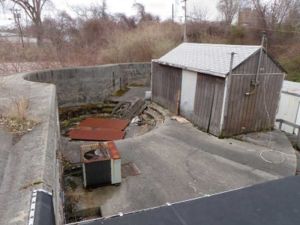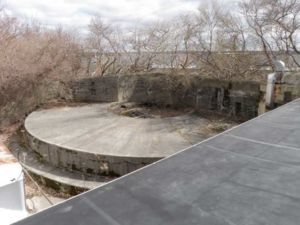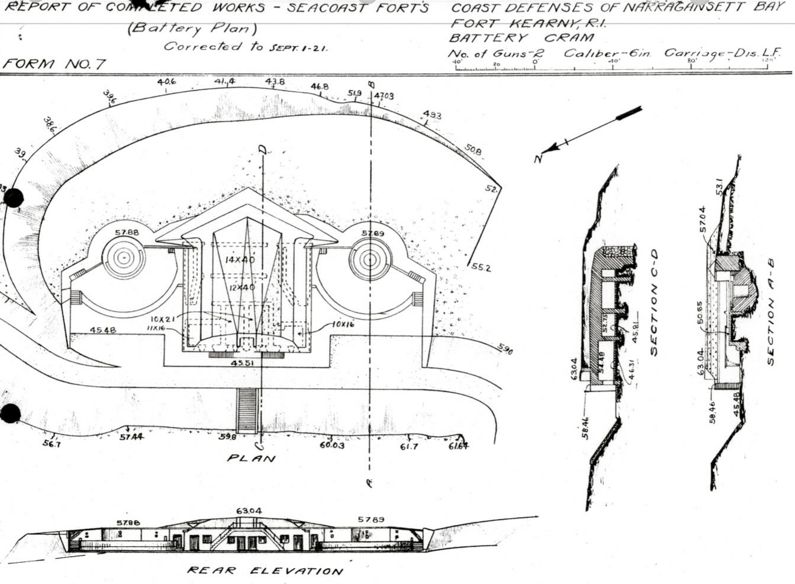Battery Cram
|
Battery Cram (1908-1943) - Battery Cram was a reinforced concrete, Endicott Period 6 inch coastal gun battery on Fort Kearny (3), Washington County, Rhode Island. The battery was named in G.O. 194, 27 Dec 1904, after Bvt. Major General Thomas J. Cram, U.S. Army (Colonel U.S. Corps of Engineers), who served with distinction during the U.S. Civil War, and who died 20 Dec 1883. Battery construction started in October 1904, was completed in November 1906 and transferred to the Coast Artillery for use 7 May 1908 at a cost of $ 63,580.00. Deactivated in 1943. Endicott PeriodPart of the Harbor Defense of Narragansett Bay. Originally built as an Endicott Period concrete coastal gun battery with two 6" M1905 guns mounted on M1903 Disappearing carriages. This was a one story battery with the two gun emplacements on either side of a common magazine. The gun loading platforms were slightly raised from the magazine level and reached by a short flight of stairs. No shell or powder hoists were provided. Electric power was provided from the power plant in Battery French. The 6" M1905 guns were not mounted until May 1910.
World War IThe U.S. entry into World War I resulted in a widespread removal of large caliber coastal defense gun tubes for service in Europe. Many of the gun and mortar tubes removed were sent to arsenals for modification and mounting on mobile carriages, both wheeled and railroad. Most of the removed gun tubes never made it to Europe and were either remounted or remained at the arsenals until needed elsewhere. Battery Cram was not affected by the World War I redistribution or the following 1920 disarmament program. World War IIThe salvage of Battery Cram was directed on 16 Jun 1943. The guns were transferred to Watervliet 8 Jun 1943 and the carriages were ordered salvaged on 16 Jun 1943. Current StatusPart of the University of Rhode Island Bay Campus on Narragansett Bay, Washington County, Rhode Island. No period guns or mounts in place.
Sources:
Links: CDSG Visited: No
| ||||||||||||||||||||||||||||||||||||||||||||||


